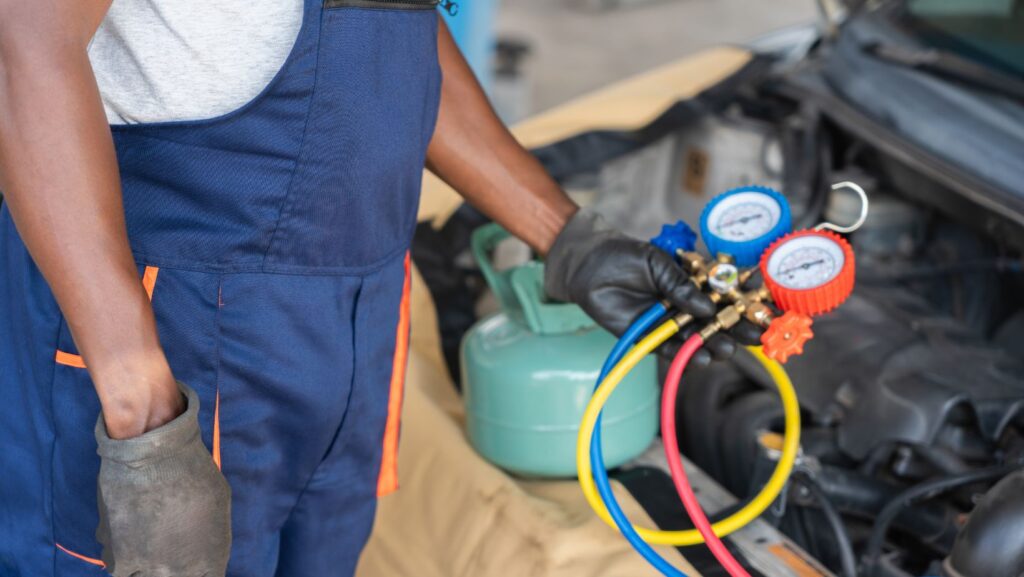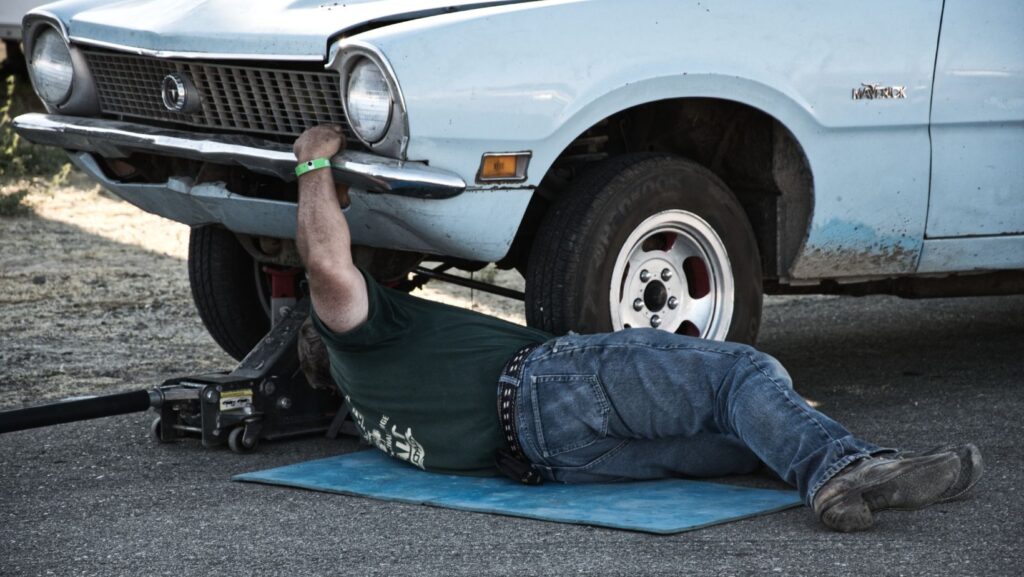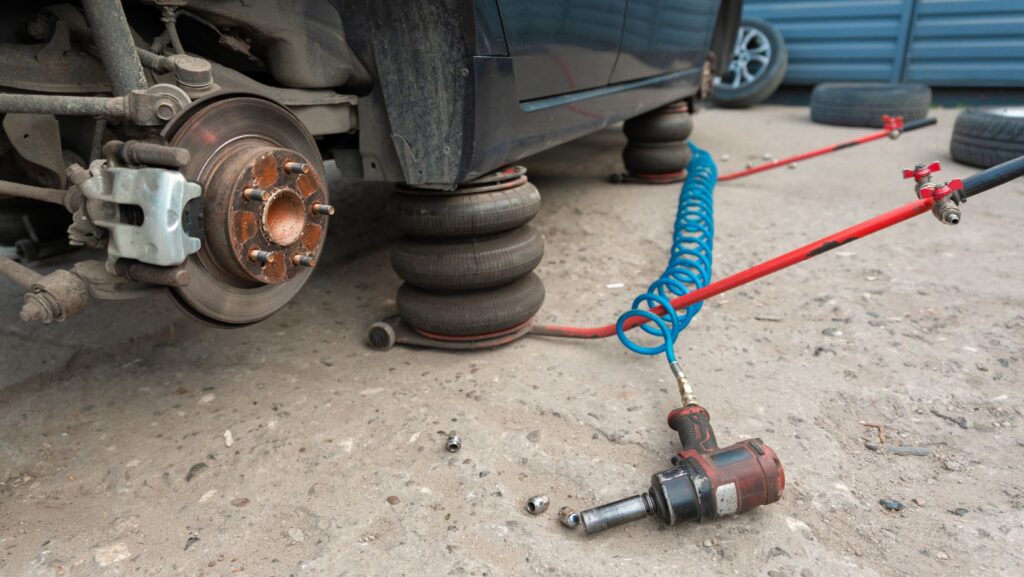A car jack air tool makes lifting a vehicle faster and less tiring, but it only works well if it stays in good condition. Dust, leaks, and worn parts can weaken its performance and create safety risks. To keep a car jack air tool safe and efficient, it must be inspected, cleaned, and maintained on a regular basis.
Many accidents happen because the jack is used on uneven ground, overloaded, or not checked for damage before use. Simple habits like testing the air supply, checking seals, and storing the jack properly can prevent failures. These steps also extend the life of the tool, which saves money and reduces the chance of unexpected breakdowns.
This guide explains how to use a car jack air tool correctly, maintain it for long-term performance, and avoid common mistakes that lead to unsafe lifting. By following these practices, anyone can handle vehicle repairs with more confidence and reduce the risks that come with poor equipment care.
Basic Steps for Safe and Efficient Car Jack Use
Safe use of a car jack depends on choosing the right tool, preparing the work area, positioning the jack correctly, and securing the vehicle before any repair. Each step reduces risk and helps the jack operate as designed.
Selecting the Right Type of Car Jack
Different vehicles require different jacks. A small sedan often comes with a scissor jack, which is light and portable but supports less weight. Larger vehicles such as SUVs or trucks benefit from hydraulic or bottle jacks, which provide higher lifting capacity.

For faster lifts, many drivers use smooth car jack air systems that rely on compressed air. A pneumatic jack can raise a vehicle quickly with less physical effort, making it useful in garages or roadside repairs.
It is important to match the jack’s rated capacity to the vehicle’s weight. Using a jack with insufficient capacity can damage the tool and create safety hazards. Always check the owner’s manual for recommended jack types and lifting points before selecting equipment.
Preparing Your Vehicle and Work Area
The surface under the vehicle must be flat, solid, and stable. Concrete driveways or garage floors work best. Soft ground, gravel, or uneven pavement can cause the jack to shift under load, which increases the risk of accidents.
The vehicle should be in park or first gear, with the parking brake fully engaged. Wheel chocks placed in front and behind the tires, not being lifted, add another layer of stability.
Loose items inside the vehicle should be removed to prevent shifting weight. Even small movements can affect balance during lifting. A clean and organized work area makes the process safer and easier.
Correct Jack Placement and Lifting Procedures
The jack must always contact the designated lift points on the vehicle. These are reinforced areas designed to handle the load without bending or breaking. They are usually marked in the vehicle’s manual or visible along the frame.
The saddle of the jack should align directly with the jack point. The operator should raise the vehicle slowly and evenly, checking that the jack stays upright and stable. Quick or uneven pumping can cause instability.
The car should only be lifted high enough to clear the ground. Lifting higher than necessary adds strain to the jack and increases the chance of tipping. Careful, controlled movements make the process safer.
Securing the Vehicle with Jack Stands
Once the vehicle is raised, jack stands must be used to support the weight. A jack alone is not designed to hold a car for long periods. Jack stands provide a stable base and reduce the risk of collapse.
The stands should be placed under the correct support points, often near the jack points but designed to hold weight for longer durations. After lowering the vehicle onto the stands, the jack can be removed.
A quick test by gently pushing the car helps confirm stability. If the vehicle shifts or wobbles, reposition the stands before working underneath. This step protects both the vehicle and the person performing the repair.
Maintenance and Safety Tips for Long-Term Jack Performance
A car jack must stay in good condition to safely lift and support a vehicle. Regular checks, safe storage habits, and quick attention to issues help keep hydraulic, scissor, bottle, and floor jacks dependable for years of use.
Regular Inspection and Cleaning
A car jack should be inspected before each use. Look for dents, cracks, or bent parts that may weaken its structure. Hydraulic jacks often show leaks around seals or hoses, while scissor and bottle jacks can develop rust on threaded or moving parts. Any sign of damage means the jack should not be used.
Cleaning keeps dirt and grit from interfering with moving parts. Wipe the jack with a clean cloth after use, and remove grease or debris from the lifting arm or screw threads. For hydraulic jacks, check fluid levels and refill with the correct hydraulic oil if needed.
Lubrication also helps extend the life of the jack. Apply light oil to shift points, wheels, and screws to reduce friction. A clean and well-lubricated jack operates more smoothly and holds weight more consistently.
Proper Storage and Handling
Storing a jack correctly prevents unnecessary wear. Place it on a flat, solid surface rather than leaving it on uneven ground. Hydraulic and floor jacks should be lowered fully before storage to reduce pressure on seals.
Avoid leaving a jack outside in damp or hot environments. Moisture promotes rust, and extreme heat can damage seals or fluid. A dry garage or shed offers the best protection. Covering the jack with a cloth or tarp also helps keep dust and dirt away.
Safe handling matters as well. Do not drag a jack across rough surfaces, as this can damage wheels or frames. Lift or roll it carefully to its storage spot. By treating the tool with care, its weight capacity and lifting ability remain consistent over time.
Recognizing and Addressing Common Issues
Common problems often appear as leaks, slow lifting, or difficulty holding weight. A hydraulic jack with low fluid may fail to raise a car properly. Refilling with the correct oil usually solves this, but persistent leaks require seal replacement.
Scissor and bottle jacks may jam if the threads become rusted or dry. Cleaning and applying oil to the screw mechanism often restores function. If parts remain stiff or bent, replacement is safer than repair.
Floor jacks sometimes stick during lowering. This may point to a faulty release valve. Adjusting or replacing the valve restores smooth operation. Addressing these issues quickly prevents accidents and keeps the jack safe for lifting vehicles within its rated weight capacity.
Conclusion
Regular care of a car jack air helps it perform safely and last longer. Simple steps such as checking for leaks, cleaning surfaces, and inspecting hoses before each use prevent accidents and delays.

Users should always place the jack on a flat, solid surface and pair it with jack stands for support. This habit reduces risks and keeps both the vehicle and the operator safe.
By following the manufacturer’s directions and keeping up with routine checks, anyone can maintain steady performance. Safe habits and proper storage also extend the tool’s service life.
